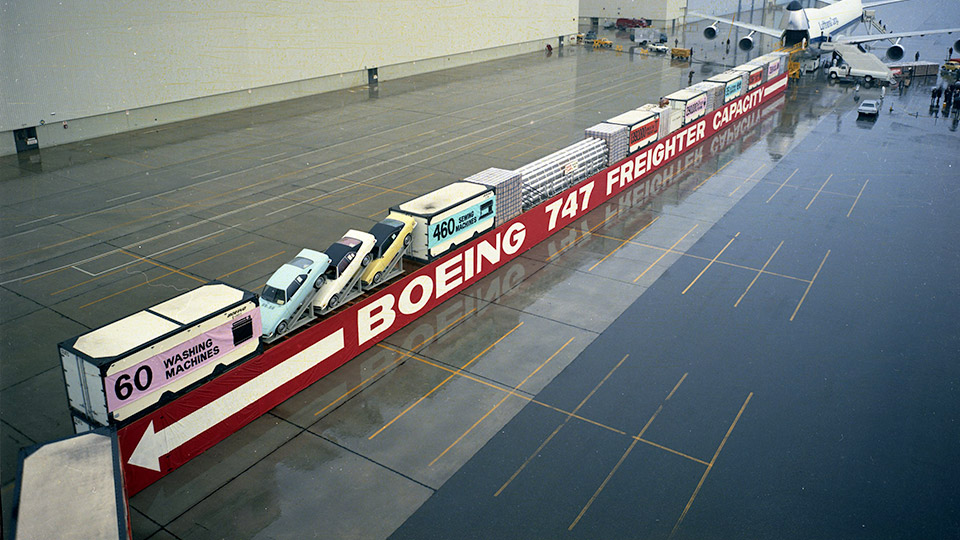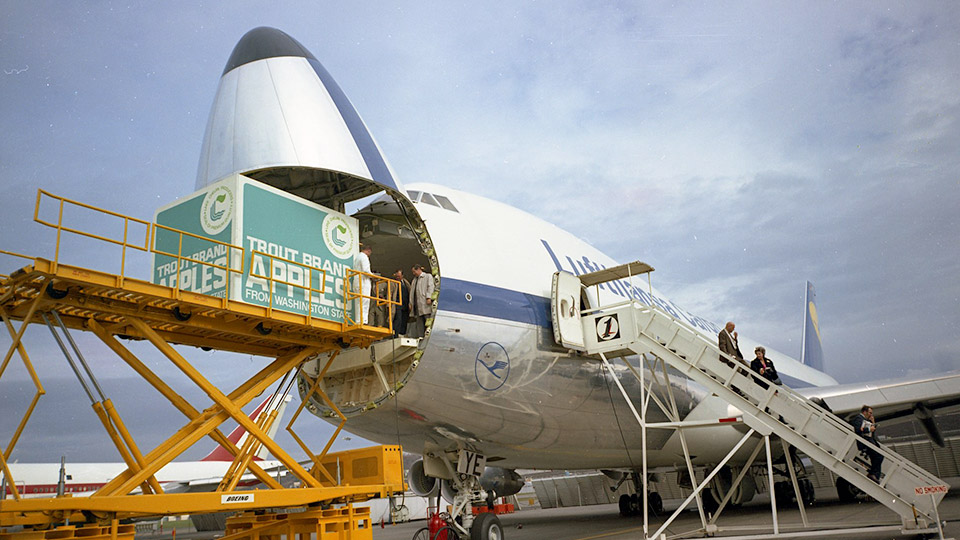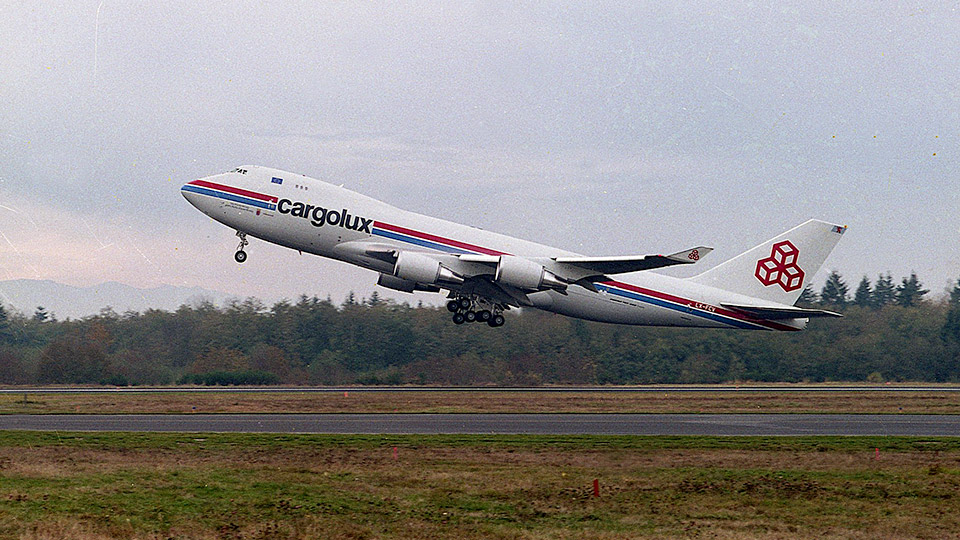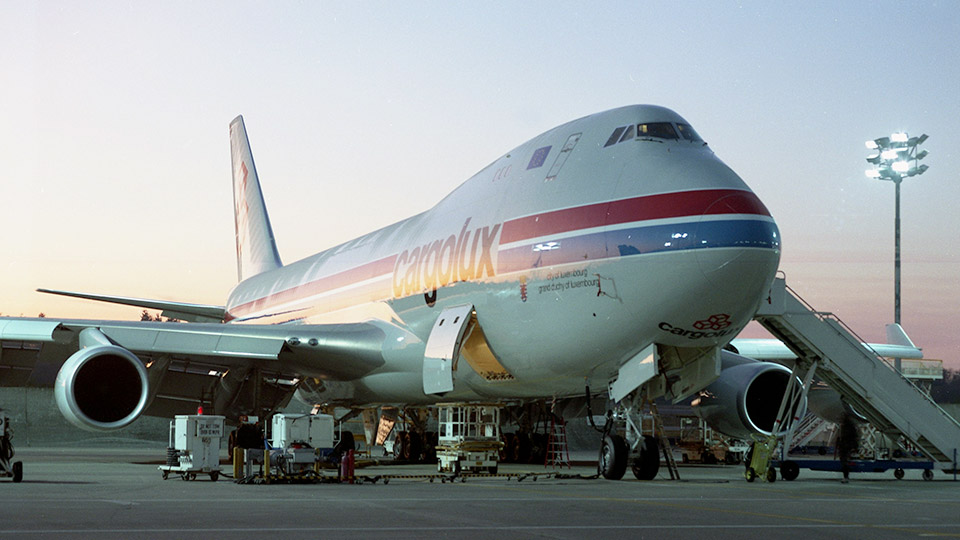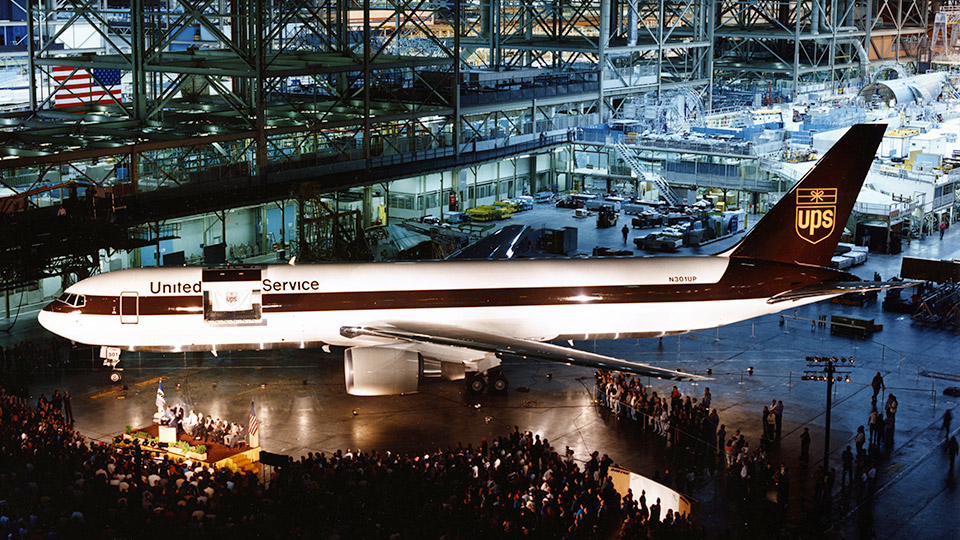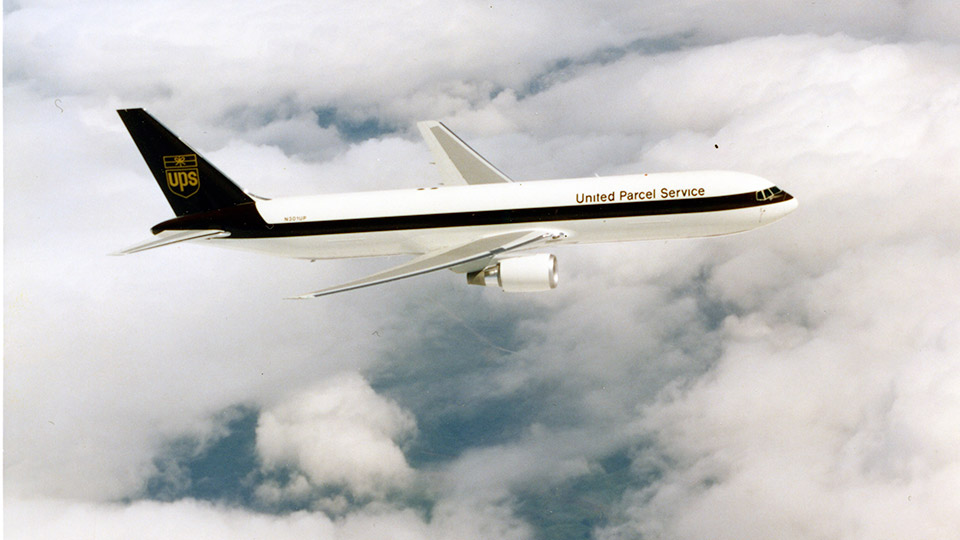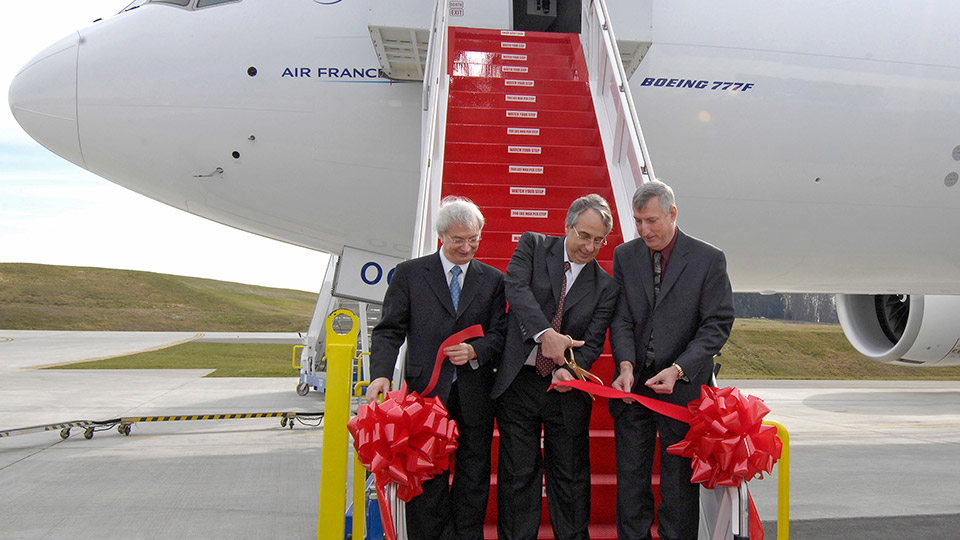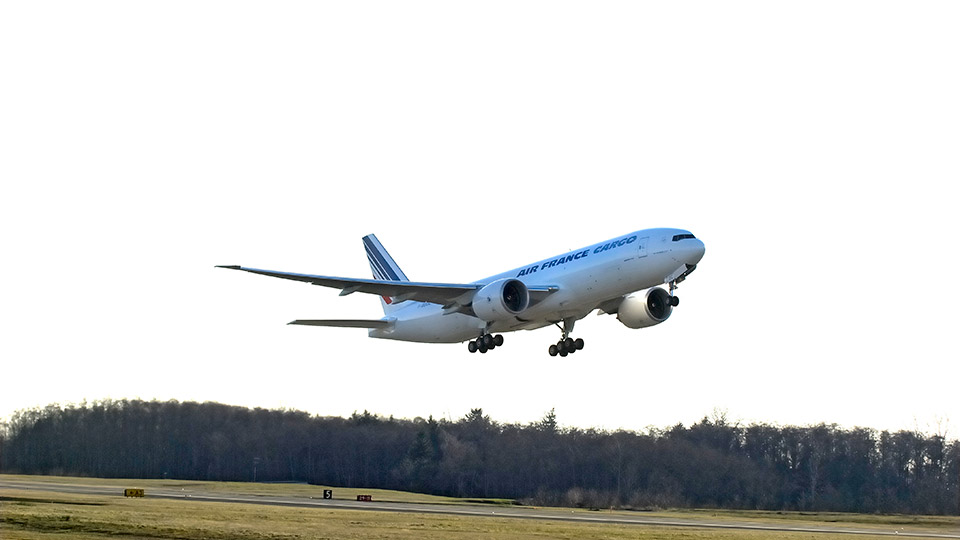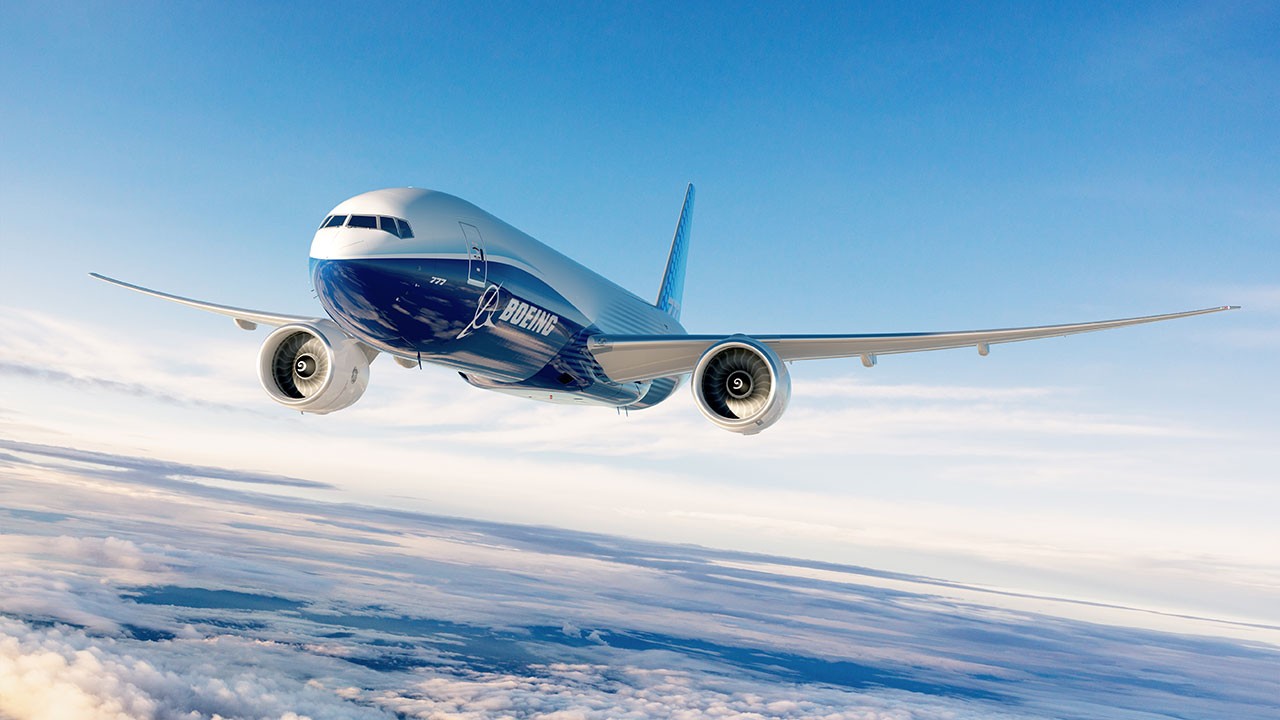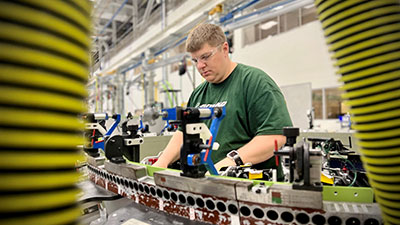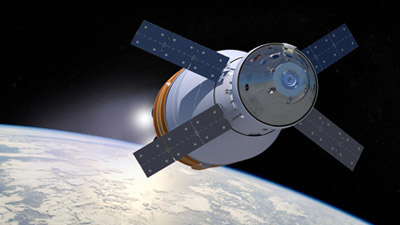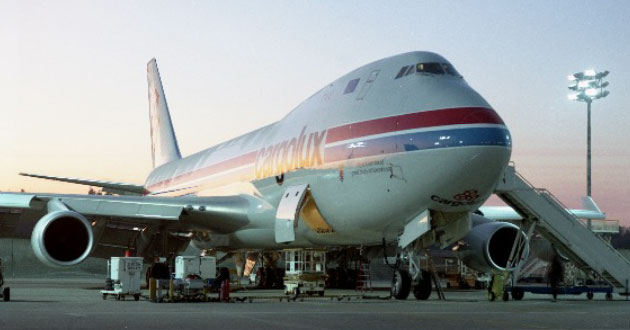Fifty Years of Freighters
- Teaser 1
- Teaser 2
- Teaser 3
- Teaser 4
- Teaser 5
- Teaser 6
- Teaser 7
- Teaser 8
- Teaser 9
On March 10, 1972 Boeing delivered the first widebody freighter, a 747-200, to Lufthansa. The delivery marked a new era in cargo shipping: The expanded capability of the 747, with its nose door that could load huge objects, meant that shippers and freight forwarders could deliver more goods faster than shipping by sea or truck.
“The ability to ship more goods by air changed global trade overnight,” said Darren Hulst, vice president of Commercial Marketing. “People around the world could receive goods in days instead of months. Boeing freighters played a significant role in that, and they continue to define the art of the possible today in e-commerce and global trade thanks to their efficiency, versatility and our continuous product innovation to support tomorrow’s market needs.”
Today, 90% of the world’s freighter capacity belongs to Boeing freighters, which fly millions of tonnes of goods around the globe. According to Boeing’s 2021 Commercial Market Outlook, the global freighter fleet (production and conversions) is forecast to grow more than 70% from 2019, amounting to 2,610 new freighter deliveries in the next two decades.
The global freighter fleet is forecast to reach 3,435 airplanes by 2040 – including the newest member of the freighter family, the 777-8 Freighter, which is set to deliver in 2027.
Click on the photo gallery to view images from other first freighter deliveries.

